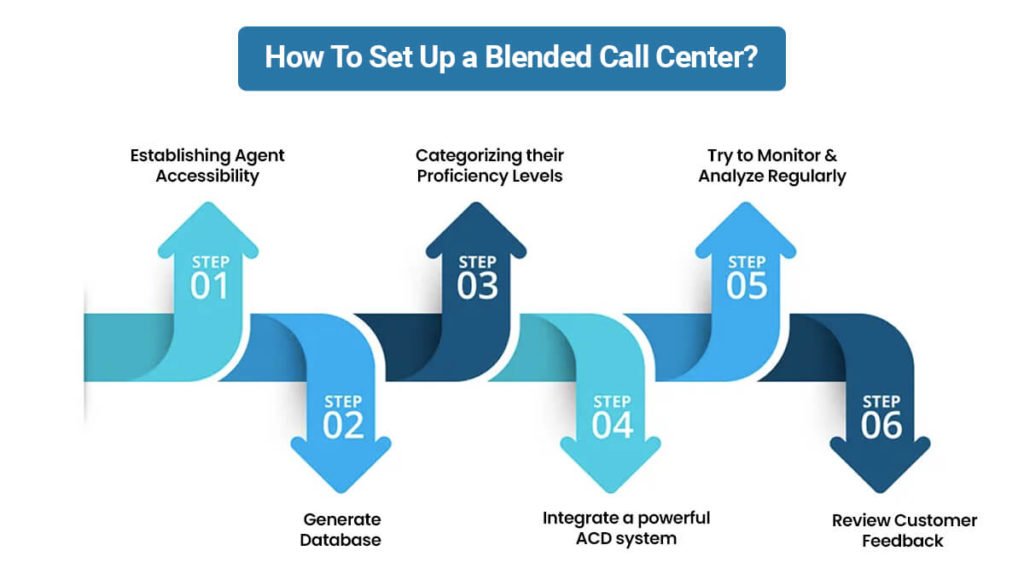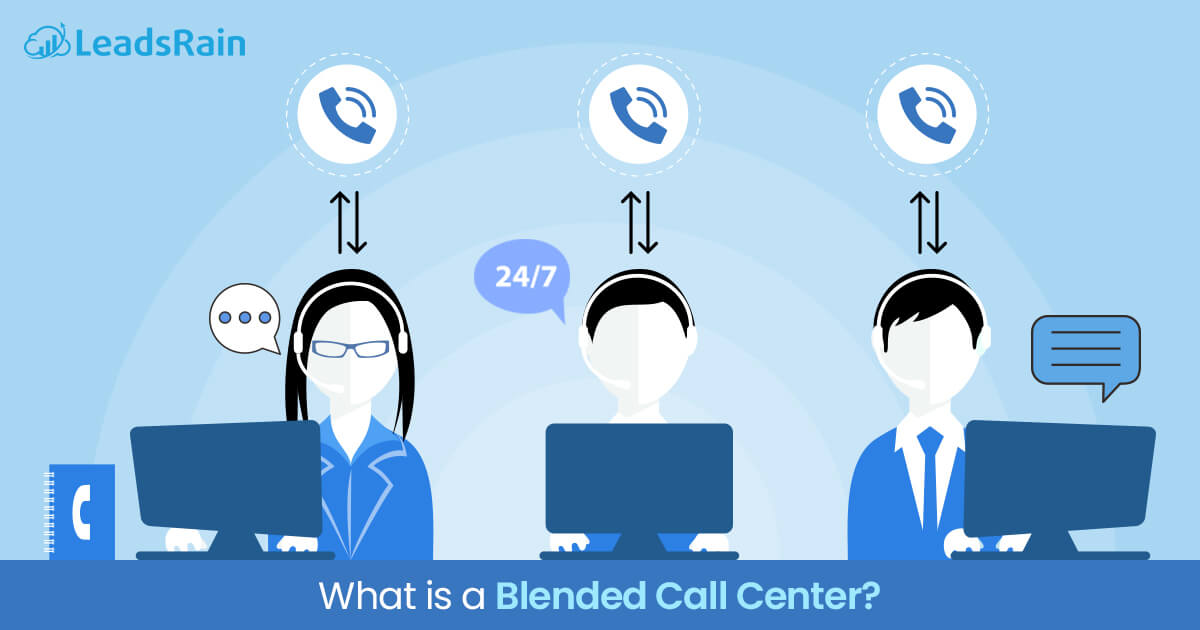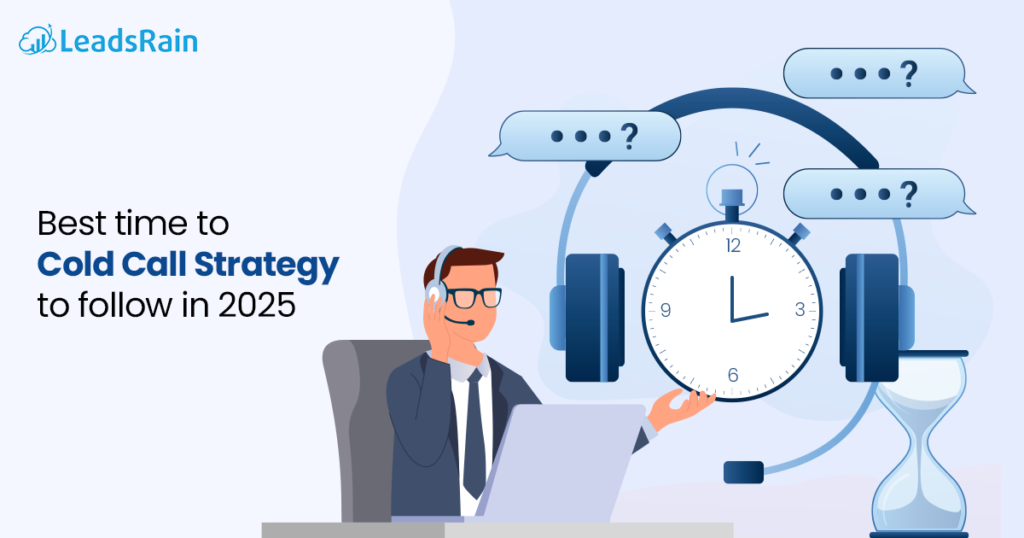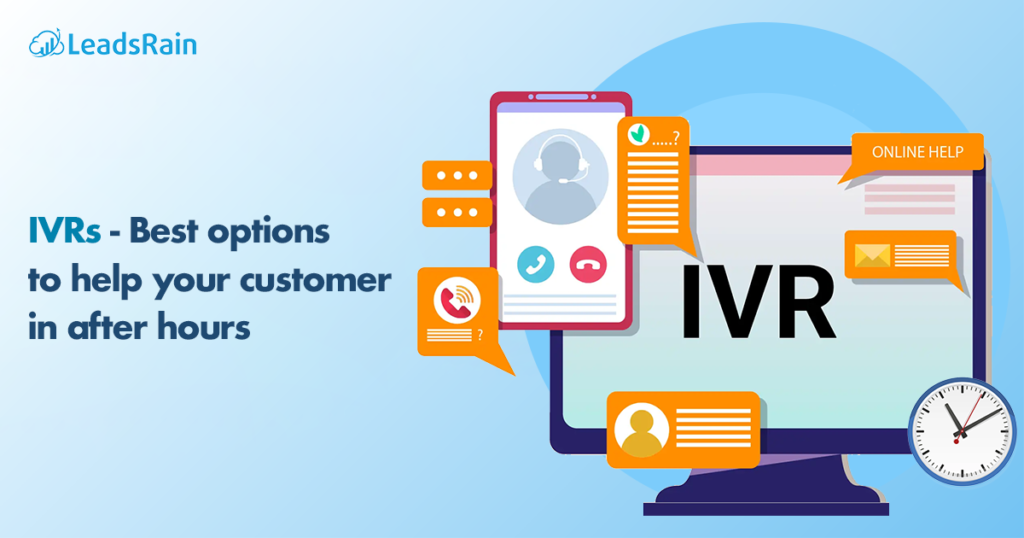Let’s dive into the concept of “Blended Call Center” to experience the next-level transformation. However, recently, technology has ground-breaking power to support contact center operations. That’s where you can offer your customers efficient and seamless experiences.
By the end of the blog, you will learn about features, advantages/disadvantages, and steps to set up a blended call center for your inbound and outbound call operations.
What is a Blended Contact Center?
The blended contact center is the customer service operation that handles both outgoing and incoming calls. This type of center consists of highly professional and well-trained agents. It’s a perfect functionality combination of inbound and outbound communication channels.
Deliver exceptional customer service by blending these two types of contact centers!
Overall, a blended call center is the ultimate solution for both inbound and outbound contact operations which are easily accessible for all solutions.
Key Features of Blended Call Center
Several key factors should be considered when it comes to blended call centers. These features make a more powerful system for amplifying customer services as well as maximizing smooth seamless operations.
Advanced Automated Dialer
You can experience the power of an advanced automated dialer, which revolutionizes your outbound calling efficiency. It automatically dials multiple phone numbers simultaneously and connects agents to answered calls which further minimize idle time.
Utilize intelligent call routing algorithms that operate by advanced predictive dialers. Predictive dialing features offer you access to live calls which upgrade the level of productivity and enhance contact rates.
Valuable insights on Customer Interactions
Gathering valuable insights through call monitoring and recording in real-time allows contact centers to listen in and offers immediate guidance and coaching to agents.
These insights on customer interactions will enhance agent performance, improve customer satisfaction, and certify consistent quality standards.
Such technologies enable automated analysis of recorded calls, provide access for keyword identification, and detect trends easily.
Automated Auto-routing Feature
Maximize call routing system, upgrade agent productivity, and enhance customer satisfaction by integrating this high-powered automatic call distribution technology.
At times of high call volume during particular campaigns, an automated auto-routing system is a ground-breaking feature that enables efficient call distribution and optimal utilization of resources.
Approach for self-service options (IVR)
Searching for efficient and convenient self-service options? Opt for IVR technology, where customers are navigated through automated menus and voice commands.
Approaching self-service options will minimize agent workload, better customer capabilities and raise customer satisfaction in your blended call center.
Advantages of Call Blending
Call blending offers various advantages, such as cost-effectiveness, improved efficiency and productivity, and enhanced customer services. It’s a great time to implement a blended call center by considering its essential benefits.
Ability to switch seamlessly
Call blending allows for a smooth transition between various communication channels. This signifies that users can effortlessly switch between these channels based on their specific preferences.
This way, agents can seamlessly switch between inbound and outbound call operations, therefore, ensuring a smooth workflow.
Render Cost-efficient Operations
One of the most important advantages is cost-effectiveness. Through the implementation of different communication channels within one platform, your businesses can efficiently streamline their calling operations and thereby minimize the need for additional systems.
Call blending provides access to leverage the most cost-effective communication for inbound and outbound operations.
Higher Level of Customer Satisfaction
When customers are offered various options for engagement, they are more satisfied with their workflow. Call blending allows their potential customers to select channels that suit best their needs.
Moreover, this type of contact center involves features such as a personalized approach, advanced intelligent routing, and an efficient call-handling system, which further leads to higher customer satisfaction.
Expand Sales Opportunities
Offering access to a wide range of communications and seamlessly blending them can help businesses expand their sales opportunities. Flexibility is a key factor in any opportunity, and therefore flexibility in communication towards sales interactions helps to build stronger customer relationships and long-lasting ones.
This results in creating more opportunities for businesses to generate revenue.
Efficiently grab the way to Generate Revenue
Effective blended dialing can raise your revenue generation. Several communication channels can be blended, such as SMS, live chat, and email marketing, for better customer services and generating sales opportunities, thereby, increasing revenue.
Disadvantages of Call Blending
It also comes with challenges like complex scheduling, agent fatigue, technical problems, and poor customer service. So, it’s essential to understand them and consider their specific requirements before implementing a blended call center approach.
Impoverished Customer Service
Impoverished customer service may result from inadequate training, high call volume, or high turnover. When customers are not getting sufficient attention for their problems, they are frustrated, and this negatively impacts the overall reputation of the contact center.
According to a survey, 44% of customers get annoyed when holding them on call for more than 5 minutes.
Facing Technical Problems
Technical problems are one of the major disadvantages of blended contact centers. Many times, customers are frustrated because they face delays in their workflow and services and this way, disruptions occur in call center operations.
These complexations in technical areas can lead to decreased productivity and efficiency and increased customer complaints and frustration rates.
Lack of Agent’s Vitality
Lack of agent vitality can lead to a degradation in the level of productivity and a decrease in customer attention toward your business. Almost all contact centers experience both mental and physical exhaustion while repeatedly switching between inbound and outbound calls.
Thus, agent burnout and low morale may emerge.
How to Set up a Powerful Blended Call Center?
Setting up a powerful blended call center requires proper planning and following each step by understanding its purpose. Here are a few common steps that need to be taken into consideration while establishing a high-performing blended call center;

#Step 1: Establishing Agent Accessibility
For establishing a powerful blended call center, categorizing agent accessibility is important. This can be implemented through cloud-based solutions such as omnichannel communication, optimizing intelligent call routing and scheduling work with ease and flexibility.
This step permits agents to access customer information and advanced tools and therefore gain valuable insights.
#Step 2: Generate Database
This step includes the segmentation process of your database to personalize customer interactions by delivering tailored-based solutions. To generate accurate databases, you can leverage the power of advanced technologies like customer relationship management (CRM).
This integration will increase your level of productivity and enable data-driven decision-making within your call center.
#Step 3: Categorizing their Proficiency Levels
Due to a blended call center, your agent can expect to get different calls from prospects and customers with different requirements and needs. By understanding each agent’s expertise area, the contact center can assign them to specific customer inquiries.
Categorizing skills on their proficiency levels will help you to handle problems and sales inquiries efficiently.
#Step 4: Integrate a powerful ACD system
The next important step is efficiently streamlining call routing through a dynamic automated call distribution system. This integration will ensure a contact center to direct incoming calls to the most suitable available agents. One can experience the scalability and flexibility of the ACD system through this step. Elevate this system to handle fluctuations in call volumes.
You can integrate automatic call distribution with other advanced tools such as interactive voice response (IVR) and customer relationship management (CRM).
#Step 5: Try to Monitor and Analyze Regularly
You should perform regular analysis and monitoring if you’re in the process of setting up a powerful blended contact center. Try to track average call duration, wait times, and first call resolution rates (FCR) for better results.
Overall, try to identify the areas of improvement through implementing robust monitoring and analysis; therefore, a customer-centric approach is created.
#Step 6: Review Customer Feedback
The final step: It’s all about reviewing your customer feedback through various communication channels. Agents can gain valuable insights by patiently listening to their potential customers and understanding their pain points.
This way, contact center agents can take proactive steps to improve customer service. Remember, try to build long-lasting relationships with your customers even after getting negative feedback.
Conclusion
Blended contact centers have become a valuable tool for almost all organizations to efficiently streamline their calling operations due to the rise in demand for personalized approaches and multi-channel experiences on one platform.




